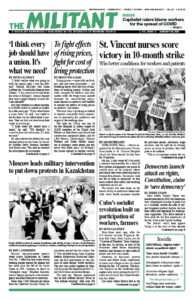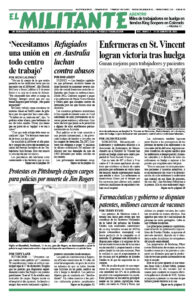January 27, 1997
January 15 was the biggest day yet as protest strikes in south Korea entered their fourth week. Union officials say 630,000 workers participated in the strike that day, and tens of thousands flooded the streets of Seoul and other cities demanding the repeal of antilabor laws.
The measures make it easier to lay off workers and replace strikers. They maintain a ban on the Federation of Democratic Unions, the second largest labor federation in the country. Another provision grants expanded powers to Seoul’s political police.
The unions had set a deadline of January 14 for the government to rescind the laws, or see an expanded strike. As the deadline approached, thousands of strikers, students, and others took part in street protests. Some 20,000 workers at Hyundai defied a company lockout and held a rally inside the plant.
January 28, 1972
SAN FRANCISCO — After negotiations between the International Longshoremen’s and Warehousemen’s Union and the shipowners were broken off, ILWU pickets closed down the waterfront here. One of the most important issues is the guaranteed annual wage, which would provide payment for 40 hours work every week whether or not work is available.
Curtis Counts, director of the Federal Mediation and Conciliation Service, told the press that if the longshoremen walked out again, the Nixon administration would ask Congress to pass a law that would “either settle the terms of the contract, or establish a mechanism for handling those terms.”
Even after 100 days on the picket line from July to October, an 80-day Taft-Hartley injunction that expired Christmas day, plus a 22-day contract extension, the morale of the ranks remains high.
January 25, 1947
NEW YORK — Eight lives were snuffed out in Harlem a week ago, and a few weeks before that, 37 men and women and children perished in an explosion.
The people in the slums live in the constant dread of who — because of bad conditions, over-crowding, inadequate garbage disposal, faulty electrical connections — will make the first mistake and start the fire. New Yorkers are condemned by the tens and hundreds to die in these disasters. If you want to find out who was guilty of murder, you will find them in the same banks and insurance companies that force people to live in rat-traps and death holes.
In the last three years Harlem’s population increased by 120,000, but no new buildings have been erected for 40 years. Only a militant fight based on an effective housing program will save the people from fire and disaster.

